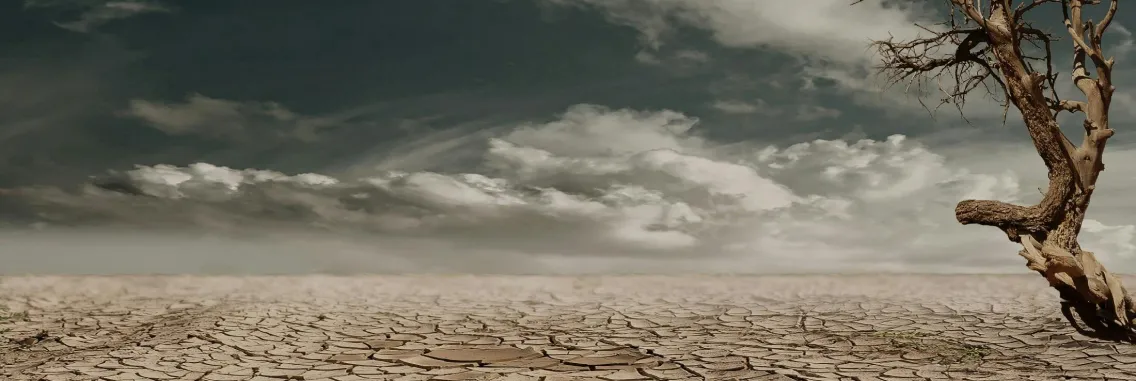
Climate resilience is a concept to describe how well people or ecosystems are prepared to bounce back from certain climate hazard events. The formal definition of the term is the “capacity of social, economic and ecosystems to cope with a hazardous event or trend or disturbance”. For example, climate resilience can be the ability to recover from climate-related shocks such as floods and droughts. Different actions can increase climate resilience of communities and ecosystems to help them cope. They can help to keep systems working in the face of external forces. For example, building a seawall to protect a coastal community from flooding might help maintain existing ways of life there.
To increase climate resilience means one has to reduce the climate vulnerability of people, communities and countries. This can be done in many different ways. They can be technological and infrastructural changes (including buildings and roads) or policy (e.g. laws and regulation). There are also social and community approaches, as well as nature-based ones, for example by restoring ecosystems like forests to act as natural barriers against climate impacts. These types of approaches are also known as climate change adaptation. Climate resilience is a broader concept that includes adaptation but also emphasizes a system-wide approach to managing risks. The changes have to be implemented at all scales of society, from local community action all the way to global treaties. It also emphasizes the need to transform systems and societies and to better cope with a changed climate.
To make societies more resilient, climate policies and plans should be shaped by choices that support sustainability. This kind of development has come to be known as climate resilient development. It has become a new paradigm for sustainable development. It influences theory and practice across all sectors globally. Two approaches that fall under this kind of development are climate resilient infrastructure and climate-smart agriculture. Another example are climate-resilient water services. These are services that provide access to high quality drinking water during all seasons and even during extreme weather events. On every continent, governments are now adopting policies for climate resilient economies. International frameworks such as the Paris Agreement and the Sustainable Development Goals are drivers for such initiatives.
Tools exist to measure climate resilience. They allow for comparisons of different groups of people through standardized metrics. Objective tools use fixed and transparent definitions of resilience. Two examples for objective tools are the Resilience Index Measurement and Analysis (RIMA) and the Livelihoods Change Over Time (LCOT). Subjective approaches on the other hand use people’s feelings of what constitutes resilience. People then make their own assessment of their resilience.
Tools for resilience assessment vary depending on the sector, the scale and the entity such as households, communities or species. They vary also by the type of assessment, for example if the aim is to understand effectiveness of resilience-building interventions.
Community resilience assessment tools
Community resilience assessment is an important step toward reducing disasters from climate hazards. They are also helpful for being ready to take advantage of the opportunities to reorganize. There are many tools available for investigating the environmental, social, economic and physical features of a community that are important for resilience. A survey of the available tools found many differences between tools with no standardized approaches to assess resilience. One category of tools focuses mainly on measuring outcomes. In contrast tools that focus on measuring resilience at the ‘starting point’ or early stages and continuously over a project are a less common.[41]
Livelihoods and food security
Most of the recent initiatives to measure resilience in rural development contexts share two shortcomings: complexity and high cost.[42] USAID published a field guide for assessing climate resilience in smallholder supply chains.
Most objective approaches use fixed and transparent definitions of resilience and allow for different groups of people to be compared through standardized metrics. However, as many resilience processes and capacities are intangible, objective approaches are heavily reliant on crude proxies. Examples of commonly used objective measures include the Resilience Index Measurement and Analysis (RIMA) and the Livelihoods Change Over Time (LCOT).
Subjective approaches to resilience measurement take a contrasting view. They assume that people have a valid understanding of their resilience and seek to factor perceptions into the measurement process. They challenge the notion that experts are best placed to evaluate other people’s lives. Subjective approaches use people’s menu of what constitutes resilience and allow them to self-evaluate accordingly. An example is the Subjectively-Evaluated Resilience Score (SERS).
Open Mapping tools for climate resilience
Open mapping tools plays a transformative role in enhancing climate resilience by enabling data-driven decision-making and predictive analytics. By analyzing vast amounts of climate data, Open mapping can identify patterns and trends that help communities anticipate and adapt to climate-related challenges such as extreme weather events, rising sea levels, and resource scarcity. Through crowdsource mapping, not only aids in mitigating the impacts of climate change but also empowers communities to develop sustainable strategies for long-term resilience.
https://en.wikipedia.org/wiki/Climate_resilience
Plaza Marein Lt.23, Jl. Jenderal Sudirman Kav. 76-78 Jakarta, 12910
Discussion and Collaboration contact us perkumpulan @openstreetmap.id